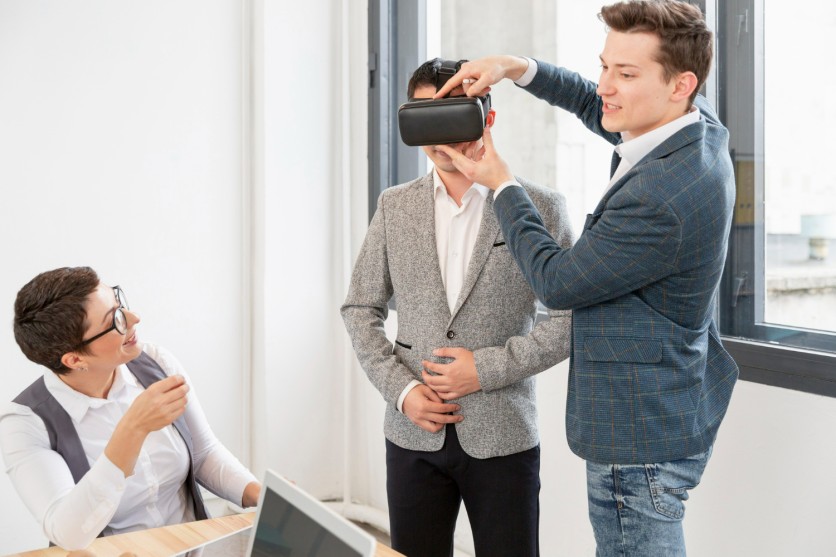
Freepik
There's a growing buzz around mixed reality services, and for good reason. As the boundaries between the physical and digital worlds blur, mixed reality (MR) is emerging as the next big step in immersive technology, one that bridges the gap between augmented reality (AR) and virtual reality (VR).
While AR overlays digital elements onto the real world and VR transports users into a fully virtual space, mixed reality services bring the best of both worlds together, allowing users to interact seamlessly with virtual objects anchored in their real environment.
From Virtual to Mixed: A Natural Evolution
Virtual reality was once seen as the pinnacle of immersive experiences, enabling users to explore entirely digital landscapes through headsets like the Oculus Rift or HTC Vive. Meanwhile, augmented reality gained traction with mobile experiences, for example, think Pokémon GO or the digital overlays used in retail and navigation apps.
But both technologies had their limitations: VR isolated users from their surroundings, while AR often felt like a 2D layer pasted on top of the real world.
In this context, mixed reality evolved as a response to these shortcomings. With MR, digital and physical worlds merge in real time. Objects can interact with one another, users can manipulate holograms with gestures, and the environment itself becomes part of the experience.
Devices such as lenses or headsets integrated with mixed reality services paved the way for this transition, showing how MR can redefine not just entertainment, but productivity, education, and even healthcare.
Why are businesses betting on Mixed Reality?
What began as an experimental technology is now becoming a cornerstone of innovation. Companies across multiple sectors are realizing that mixed reality can go far beyond gaming or creative expression. It's a tool for transformation.
In medicine, MR is used to train surgeons and visualize complex procedures in real time. Instead of relying on 2D imaging, practitioners can interact with 3D models of organs or systems, leading to safer and more precise outcomes.
In architecture and construction, teams can visualize entire structures before they're built. Clients can walk through virtual renderings of their future homes or offices, spotting design flaws early and saving both time and money.
In education and training, mixed reality is making learning more interactive and accessible. Students can explore the solar system, manipulate molecules, or conduct virtual experiments. All while grounded in the real world.
And in retail and manufacturing, MR is redefining how consumers experience products and how workers handle complex tasks. From virtual fitting rooms to guided assembly lines, the combination of real and digital elements enhances accuracy, efficiency, and engagement.
The Competitive Advantage of Early Adoption
Just as early adopters of VR and AR gained a marketing edge, companies that begin integrating mixed reality today are positioning themselves for the next wave of digital transformation. MR not only enhances internal processes and collaboration—it also creates new opportunities for customer engagement and brand storytelling.
Imagine product demos where customers can interact with life-sized 3D models, or virtual showrooms that blend seamlessly with physical spaces. For enterprises, MR can improve remote teamwork by allowing employees to share and manipulate 3D data in real time, no matter where they are.
While VR and AR each have distinct value, mixed reality's hybrid approach promises to outgrow them both. Analysts predict that as devices become more affordable and software more sophisticated, MR will become a standard tool for innovation across industries.
The companies that thrive in the coming decade will be those that don't just adapt to new technologies—but redefine their business models around them. And as mixed reality services continue to evolve, they'll transform not only how we work and learn, but how we experience the world itself.

-
 C114 Communication Network
C114 Communication Network -
 Communication Home
Communication Home


